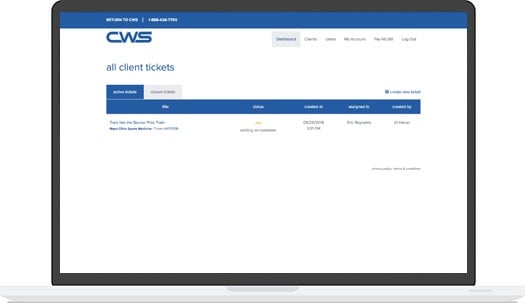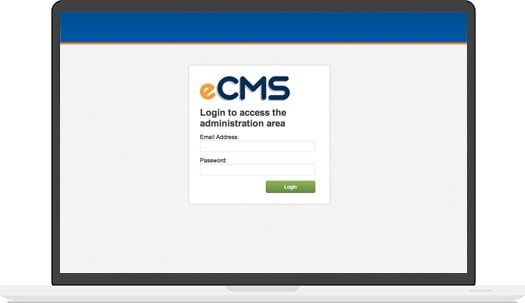How do you keep your office running efficiently? What do you do when you sense that productivity is worsening? CWS decided to take a look at these 3 topics surrounding productivity:
(1) Creating a productive work environment
(2) Sustaining an efficient workplace
(3) Preventing extended lulls in performance
CWS, Inc CEO and owner, Alan De Keyrel was gracious enough to sit down and provide his thoughts on these topics.
Creating a productive work environment
Me: What motivates individuals to be productive at work?
Alan: It’s important to realize that everyone is motivated differently. You shouldn’t always assume it’s about the money. Money is important and you have to pay your team well if you want them to stay, but sometimes people are more interested in flexible hours, a stable position, or even a fun office culture. It’s crucial to find out what motivates each of your team members early on. In fact, we always ask this of candidates during the interview process.
Me: What’s different about motivating a team versus individual employees?
Alan: Motivating a team is about having common goals that everyone is working toward. Communication is essential. By frequently communicating the tasks and progress of these goals, they become more tangible wins for the group. Be sure that everyone knows their roles and next steps for accomplishing these goals.
Remember, goals shouldn’t be overly vague or too far into the future such as “Let’s make more money” or “Let’s grow the business.” Yes, these are part of your endgame, but these goals don’t provide as many opportunities for short-term objectives and successes that keep the team motivated. Goals such as “let’s get this product launched” or “let’s get everything we need set up for this event, so it’s the best ever” are more inspiring for the team.
Sustaining an efficient workplace
Me: Personal issues, distractions, and burnout can all contribute to low performance. How do you maintain a consistent level of productivity?
Alan: The answer is in the question. The phrase “level of productivity” sounds like you’re dealing with malfunctioning machinery. We employ people, not machines. Like it or not, you’re not going to get 8 hours of efficient working time every day of every week, day in and day out. That’s unrealistic. Be understanding and relax your expectations. That being said, you need to find ways to empower people to work hard for you, knowing it may not be from 9-5 every day.
At CWS we have each employee fill out weekly reports with their highs and lows, as well as how they perceive their current workload. This gives us valuable insight to how individuals are doing both personally and professionally. Recognizing obstacles allows leadership to tend to employee’s specific needs, which then empowers those employees to continue to work hard for the company.
Preventing extended lulls and issues in performance
Me: What are some “red flags” that may signify a dip in team performance?
Alan: The go-to answer is often loss in revenue, but in my opinion, this is too late. Don’t wait until you’re losing money, employees are unhappy, and work becomes a struggle to figure out how to become an efficient workplace again.
Track company performance with KPIs or Key Performance Indicators. KPIs are different for every business. They evaluate factors that are important to the success of your organization. However you choose to track your team’s performance, be looking at these figures often and WITH the team. This way, you can recognize downward trends long before they start hurting business. One of the most important trends to avoid is overloading your team members. Burnout is one of the main causes for employee departure, which leads very quickly to loss of revenue.
Me: How do you jump-start team performance during a lull?
Alan: The first step is to analyze why there is a lull. There are two reasons why a team may not be performing at its best. (1) Employees do not know what is expected from them and (2) there is a larger morale issue at hand.
People need to know what the company’s expectations of them are. At CWS, we go beyond providing a simple job description. Instead we use KRAs or Key Responsibility Areas. Here is the difference:
Job Description: Answer phones and respond to customer support emails.
KRA: Answer all support calls and emails within 24 hours. Communicate with clients in a professional and courteous manner at all times.
The main question that differentiates the KRA from the job description is “am I winning or losing at my tasks?” You may have answered an email, but was it done in a timely and courteous manner? Employees are motivated when they feel they’re winning at their expected KRAs.
Another reason for the lull may be general morale issues. This occurs due to too much work, not enough resources, and/or a disconnect between employees and the leadership team. Having clear expectations and working toward common goals can jump-start morale. And don’t underestimate the power of adding more fun to the office! Even if you receive pushback from overloaded workers, try your best to infiltrate fun into the workday. It will pay off.
Final thoughts?
Alan: Prevent performance issues by creating a great culture and work environment for your team. Empower each team member to “win” at their tasks. Encourage people and treat them as humans, not machines. Then you’ll find that your employees are not only working hard but loving their work.


.jpg?t=1533315998368) How-To Articles
How-To Articles Support Portal
Support Portal Webmail
Webmail Rapid Newsletter+
Rapid Newsletter+ eCMS
eCMS
 Alex Slack is a Project Manager and Content Creator. Her magic formula for marketing success is summarized by the 3Cs: communication, creativity, and care. She will help manage your project from the initial brainstorm session, to the height of your campaign and beyond. Let Alex guide you and help simplify this crazy world of digital marketing!
Alex Slack is a Project Manager and Content Creator. Her magic formula for marketing success is summarized by the 3Cs: communication, creativity, and care. She will help manage your project from the initial brainstorm session, to the height of your campaign and beyond. Let Alex guide you and help simplify this crazy world of digital marketing!
